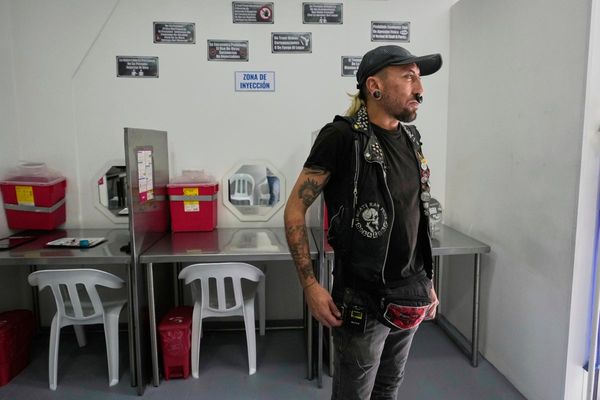There has been a succession of spectacular acts of public violence and terrorism over the last few months, including the murder of the CEO of the insurance company United Healthcare, Brian Thompson, in New York, the suicide of army veteran Matthew Livelsberger in Las Vegas and the car attack in Magdeburg, Germany.
It is tempting to explain these puzzling events as products of mental disorders. The same types of explanations are frequently heard for the unorthodox decisions of United States President Donald Trump. But are these explanations legitimate, or even a good idea?
Trump’s second term in power, which has focused on stoking people’s anger, has given rise to numerous interpretations of this kind. Critics have analyzed Trump’s shocking decrees and statements (for example, “cleaning out” the Gaza Strip) as symptoms of mental illness.
Though they might disagree on its substance, some analysts are taking the Trump administration’s “shock and awe” approach to governance seriously. Others simply claim that the president of the United States is crazy. This characterization is both violent and simplistic.
Thousands of subscribers already receive The Conversation’s Canada Daily newsletter. And you? Subscribe today to our newsletter to better understand today’s major issues.
What is pathologization?
Pathologization refers to the act of explaining actions by presuming or diagnosing an individual pathology. It is a common reflex to explain extreme acts, one that also serves as a catch-all for violent and apparently inexplicable actions.
But what is the social function of pathologizing political violence and violent policies? And how does this affect our understanding of the issues underlying this violence?
As a doctoral student in political philosophy, my research focuses on specific collective traumas and their political dimensions. In a context of increased polarization, I am particularly interested in how trauma and other mental pathologies are used to explain political phenomena such as violence.
Mental health is certainly a political issue. However, on the one hand, using it this way risks depoliticizing actions that are part of a clear political agenda. And on the other, it risks overshadowing the social pathologies that actually emerge from violent policies (such as the collective traumas that result from colonization and war).
In the case of Donald Trump, pathologizing him is likely to generate confusion about the real motives behind his policies. Indeed, although his incendiary statements are explained as the product of psychological instability, they are, in fact, well thought out. His statements also feed into the collective traumas that fuel political conflicts.
Instrumental pathologization
It’s interesting to compare how pathologization, whether in reference to dementia or trauma, is used to analyze the actions of the powerful vs. the powerless.
In the current context, the alleged suicide of Livelsberger in the explosion of a “cybertruck” in front of the Trump Hotel in Las Vegas in January 2025, is telling. As he wrote in his suicide note, the explosion was “not a terrorist attack,” but rather meant as a “wake-up call” for an American public that has become thirsty for “spectacles of violence.”
However, Livelsberger claimed his suicide was also motivated by the need to “free himself from the burden of the lives” he had taken during his years of service in the military. Several media outlets were quick to note the author’s diagnosis of post-traumatic stress disorder (PTSD), a major issue among American veterans.
So, this spectacular gesture took place at a unique meeting point: it was certainly a political gesture, but one with motivations explicitly linked to psychological suffering.
The violence at the root of the pathology
What is the point of linking the pathologization of the violent political actions of a president to those of an army veteran?
Firstly, because the tendency to pathologize violent acts has long favoured white men: several studies on mass killings, for example, show that violent white men receive more empathetic media treatment than do men of colour.
Secondly, the pathologization of political actions, such as oppositional activism, is a recurring tool of depoliticization through the individualization and stigmatization of collective acts. In the case of Livelsberger, who took individual but spectacular action, the pathologization seems to have rendered the political demands behind the gesture invisible: it became about trauma, case closed.
Ultimately, the over-visibility of individual pathologies such as PTSD, combined with the pathologization of the actions of the powerful — like Trump — become a strategy that masks the collective traumas that are actually the underlying cause of political violence.
While simultaneously explaining Livelsberger’s suicide and the violent policies of the American president as products of mental illness, we overlook the social traumas that are the source of large-scale violence, such as the traumas of wars in the Middle East and those of socio-political events in the U.S. and the rest of the world. These are bound to increase as fascism, already uninhibited, continues to progress.
The need to think about collective trauma
Khaled Diab, a Belgian and Egyptian journalist for the Guardian who specializes in Middle Eastern politics, pointed out in a 2023 article that collective trauma is the cornerstone of the Israeli-Palestinian war. It nurtures a mistrust that poisons the idea of coexistence “by investing violence with a hypnotic redemptive value.”
The risks of pathologization are very real, especially in the context of rising fascism in some areas of the world.
Explaining violent actions and policies in terms of individual pathologies can mask their real causes, namely divisive discourses and conflicts. What’s more, reducing violence to a pathology can conceal the other function of these very discourses and conflicts by presenting the use of violence as “redemptive.” This rhetorical tool is used in Trump’s agenda and in other cases of fascism centred on popular anger.
To put it another way, pathologization camouflages the system behind the violence, but also the collective traumas that stir further violence, both here and elsewhere.
Now, more than ever, we must remember that while individual pathologies can be treated — provided that therapies are accessible, an ideal far from being achieved everywhere — overcoming collective traumas requires much more time, resources and resilience. Unfortunately, these traumas can feed the very collective resentment that is at the root of fascism.
Éléonore Paré received funding from the Social Sciences and Humanities Research Council of Canada (SSHRC).
This article was originally published on The Conversation. Read the original article.







